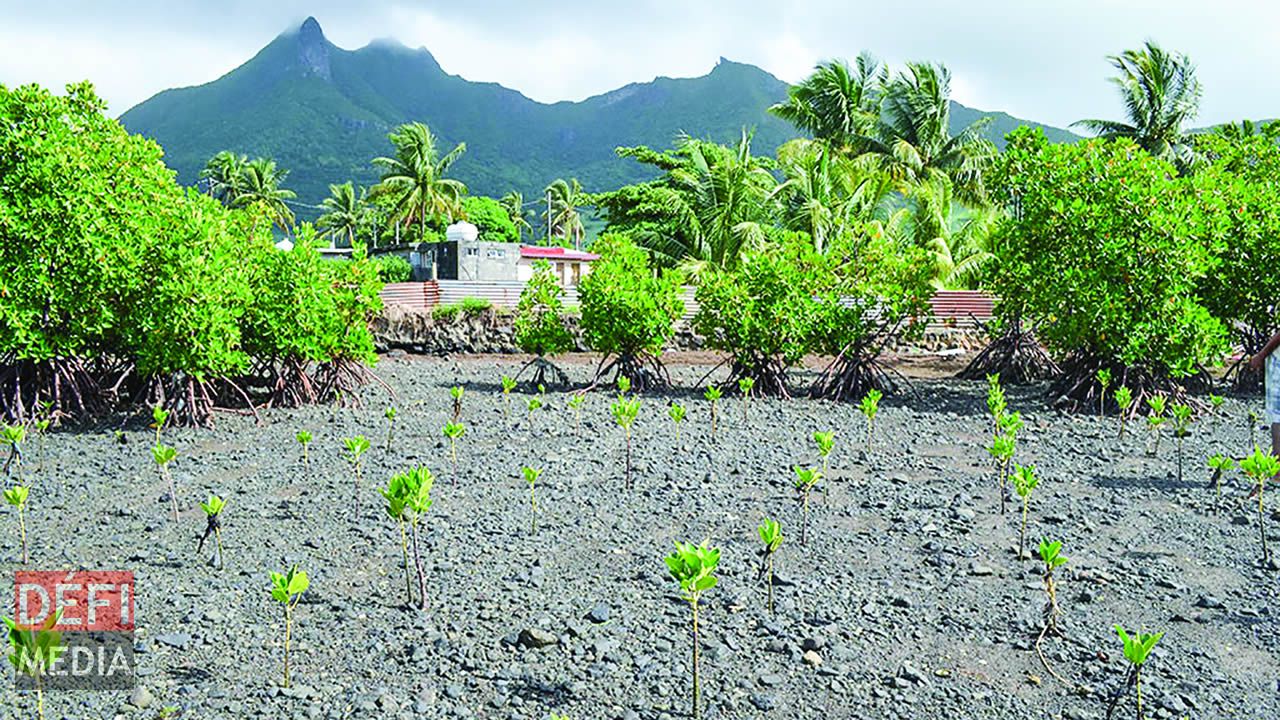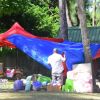
The winter season has started in Mauritius and we have the next five months to plant mangroves and render them strong enough to be rooted solidly before the next cyclonic season starts and so that, in future, they can protect our small island. There are many NGO’s along with government people who are working for the conservation of mangroves but still, community participation can only assure the success of these various projects.
Publicité
When the right species are planted at the right time, it will surely become a nesting and breeding habitat for juvenile fish, migratory birds, and sea turtles. An estimated 80% of the global fish catch relies on mangrove forests either directly or indirectly.
The first time I heard about mangroves was after the tsunami of 2004, which hit the west coast of Sumatra, Indonesia, on 26th December 2004. It was one of the deadliest natural disasters in recorded history, the deadliest of the 21st century so far. Indonesia was the hardest hit country, followed by Sri Lanka, India, and Thailand. After that disaster, everyone started searching for solutions and precautions to be taken during these kinds of natural calamities and mangroves were on forefront of every prepared list: A shield against the strong waves of tsunami.
For Mauritius, mangroves serve many purposes and are important in many ways. They surely act as a barrier against tsunamis, cyclones and hurricanes but mangroves provide us with a range of other 'ecological services'.
Mangroves play an important role in the coastal ecosystem of Mauritius. They not only prevent coastal erosion but also provide shelter to juvenile fish and other marine lives. Mangroves are of great economic value. Earlier settlers were making direct use of them as fuel wood; this practice has diminished, as today, mangroves are protected by law.
The medicinal use of mangroves from Mauritius has also been reported as poultice on wounds, against hemorrhages, as an antihypertensive or for their anti-diabetic properties. The indirect uses reported are the ecological function. Mangroves also play a crucial role in storm protection and sediment retention.
Replantation of mangroves with community participation is a common strategy employed by the decision-makers and NGO’s here in Mauritius.
The coastal communities are already impacted: bearing witness to land erosion and changes in fish stock that threaten their livelihoods. Faced with the new reality of sea-level rise and frequent floods and tidal surges, the local populations of some coastal areas have taken matters into their own hands. The most famous community involvement was by Grand Sable Women's Planters Association.
They planted around 20,000 mangroves propagules (seeds) in their village to support their fishermen husbands who were facing scarcity of fish in the area, due to lack of protection for juvenile fish.
Although there are only few examples of community participation here in Mauritius, most of the works related to mangroves are done by NGO’s.
Mauritius Legislation also helps in protecting mangroves such as the Fisheries and Marine Resources Act 1998, which stipulates that “no person shall cut, remove, damage or exploit a mangrove plant or part of a mangrove plant except with the written approval of the Permanent Secretary.”
Mangroves in Mauritius
Mangroves are remarkably tough. Most breed on muddy soil, but some also grow on sand, peat, and coral rock. They live in water up to 100 times saltier than most other plants can tolerate. They thrive despite twice-daily flooding by ocean tides. There are around 80 described species of mangroves, but, only two species are found in Mauritius namely ‘Bruguiera gymnorrhiza’ and ‘Rhizophora mucronata’, both being in the ‘Rhizophoraceae’ Family (common name: Red Mangrove).
Distributed mostly on the eastern coast of Mauritius (especially at Trou d’Eau Douce, Pointe d’Esny, Poste Lafayette, Poste de Flacq and other islets such as Illot Brocus and Ile aux Cerfs), mangrove coverage was around 20 km2 in 2003.
R. Mucronata is the dominant species while B. Gymnorhiza is less common and has been observed in the brackish water regions at Pointe Lafayette, Ferney, Trou d’Eau Douce and Mahebourg. In certain areas such as Maconde, the mangrove forests are quite thick.
About 80% of commercial fish depend on mangrove sites during their juvenile stages, so healthy mangroves are vital as many people in Mauritius depend on fisheries (fishing, crab catching) to earn a living. In this respect, the Ministry of Fisheries started a mangrove propagation programme in 1995 so as to protect and restore the stripped areas.
Mangrove Protection Programs
Mangroves covered most of the coastline of Mauritius in the past. Over the decades, mangroves have been destroyed for firewood, construction purposes, development purposes and for providing boat passages. In Mauritius over the last decade, there have been rigorous inputs from the Ministry of Fisheries and Marine Resources with regards to replantation programs on mangroves.
This programme became necessary because lack of mangrove plants in the lagoon was responsible for considerable decrease in yield of fish, as juveniles were exposed to carnivorous fish.
As a small island, every resident in Mauritius should understand that the responsibility to save mangroves is not restricted to NGO’s and the people living on the coastal areas. Ever threatened by hurricanes and even more by human destruction, the mangroves of our planet are endangered. Let’s get together and help the people who are working for mangroves on our island. Today, we will save them so that they can save us in many ways in future.
Mangrove propagation programme in Mauritius
In 1995, the Albion Fisheries of the Ministry of Fisheries started a Mangrove Propagation Programme with the aim of protecting and rehabilitating stripped areas and sensitizing the public about the importance of the ecosystem. The programme was implemented in five phases.
From 1995 to 2004, around 214,000 mangrove seedlings were successfully planted on an area of about 13 hectares of the coastal strip and with a survival rate exceeding 80%. The total mangrove cover around the island has significantly increased and presently stands at some 145 ha (ESA Classification Report, June 2009).
The ‘Association pour le Développement Durable’ (ADD) has been involved in mangroves propagation in collaboration with local communities and concerned Ministries and institutions as from its formation in 2007.
Sachooda Ragoonaden
Vice President
The Association pour le Développement Durable (ADD)
Savita Tiwari

Notre service WhatsApp. Vous êtes témoins d`un événement d`actualité ou d`une scène insolite? Envoyez-nous vos photos ou vidéos sur le 5 259 82 00 !















![[Info Soirée] : «Se enn moman kot tou la fami dekonekte ar portab ek rezo sosyo»](https://defimedia.info/sites/default/files/styles/square_thumbnail/public/thumbnail_200425.jpg?itok=6Z6bF_6Y)





